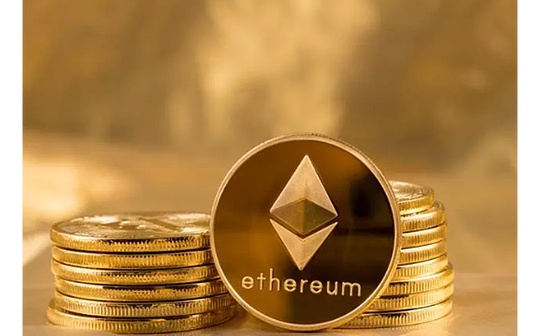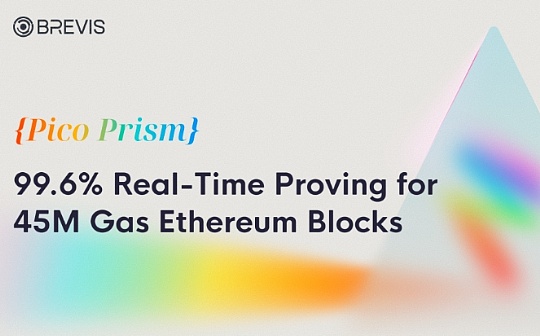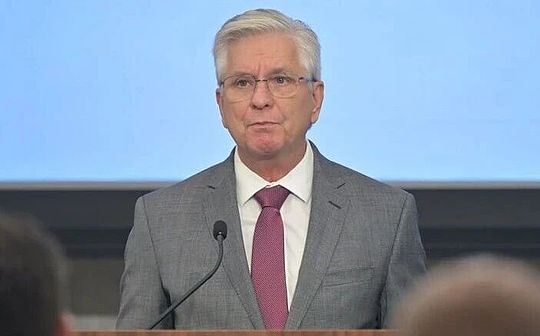
Author: Jiawei @IOSG
Recently, Ethereum founder Vitalik Buterin and FSL CRO Mable Jiang conducted a flash interview with AMA in Tako App. This is also the first Chinese AMA conducted by Vitalik in recent years, aiming to enable more people in the community to go from technology, ecology, and the future.Understand the current state of Ethereum from directions and other angles.We have compiled some of the core views given by Vitalik, hoping to give readers some inspiration.
Summarize
-
Vitalik defines “world computers” as “where the world’s applications can operate with each other”, rather than “computers that can support every application in the world at the same time”.Ethereum is not only a digital asset with long-term value storage capabilities (such as Bitcoin) and is also an underlying platform that supports global application interoperability.The two are not contradictory.”World Computer” is implemented in a coordinated manner through a highly decentralized, trustworthy L1 (understanding chain) with L2 (capacity expansion layer) with capacity expansion capabilities and dedicated features.It is not feasible to rely entirely on L1 or L2.
The core task of L1 is to ensure security and network resilience—even if the foundation no longer exists, developers around the world can still maintain the ecosystem based on open clients and protocols.L2 carries the mission of performance expansion and scenario innovation, such as high throughput, privacy, or AI model collaboration.
The relationship between the two is like the foundation and architecture of the city: L1 ensures stability in geology, and L2 allows free design of the form.However, the premise of this architecture is that L1 must maintain sufficient throughput capabilities so that any user or application can directly interact with the main network when necessary, while ensuring interoperability and avoiding L2 becoming a closed island.
In summary, Ethereum’s ending does not require an either-or choice between “digital gold” and “world computers”.The compatibility of the two is precisely its unique value: Ethereum needs to be a decentralized, censor-resistant, and long-term trustworthy value storage carrier like Bitcoin, and it must also serve as the underlying infrastructure to support the interoperability of global applications.sex.
Compared with the idea that “L1 is the basic layer to fully support L2” a few years ago, Vitalik proposed “hybrid L1 + L2” in this AMA, that is, L1 also needs to assume a certain role, and add blobs to L2 morespace, promote interoperability across L2.According to actual demand, the market will figure out which transactions should be in L1 and which transactions should be in L2.
-
In the past three years, the development of the Rollup route has shown some polarization.On the one hand, L2 represented by OP Stack achieves second-level transaction confirmation and MEV control through centralized Sequencer; on the other hand, the architecture of over-reliance on a single team operation has also aroused doubts about censorship resistance and long-term credibility..
Vitalik believes that at the technical level, it is necessary to ensure censorship resistance through forced transactions.At the ecological level, Vitalik encourages the exploration of “special L2”.For example, Aztec implements privacy transactions through full homomorphic encryption, Gensyn focuses on distributed AI training, while MegaETH implements 100,000 TPS high-performance scenarios with a centralized Sequencer—these experiments are essentially answering “How much does it go”What application is centralized to adapt to?
-
Vitalik had contact and face-to-face conversations with many community members, believing that the Ethereum Foundation needs to focus on supporting public goods, setting technical standards and maintaining ecological balance in the future, rather than pursuing corporate governance.Corporate governance means pursuing profitability.Ethereum is a decentralized ecosystem, not a company. If Ethereum becomes a company, it will lose most of the long-term existence significance of Ethereum.
Vitalik disapproves of short-term speculation culture (such as memecoin’s over-hype) and over-care for political needs, advocating long-term value and attracting long-term developers.Of course, Vitalik is not completely opposed to memecoin. As early as March last year, he proposed the possible practical uses of memecoin in his article “What else could memecoins be?”.
-
In Vitalik’s eyes, good applications should meet the real needs of users, be able to achieve sustainable profits, and have social value.The problem with many projects is that they fabricate the need that does not exist or is difficult to verify, and does not require blockchain censorship-resistant, verifiable, and collaborative characteristics.Some successful products often start with “minimum necessary scenarios”.A healthy profit model needs to be rooted in real value exchange, such as Uniswap handling fees on the financial side, as well as annual fees and scarce domain name auctions on the non-financial side.
Compilation of core views on some specific issues

I think these two ways of thinking are compatible with each other.
If you need to distinguish which blockchains are “really decentralized”, you can use a relatively simple test: If its foundation disappears, can the chain survive?I feel that only Bitcoin and Ethereum can answer clearly: Of course.Most of Ethereum’s development is a foundation, and the client team has independent business models. Now many researchers are not in the foundation, and almost all activities except devcon are independent.
It is difficult to reach this stage.Ethereum was not like this 5 years ago.
Giving up these advantages in order to pursue TPS is a big mistake, because there are always new links coming out, and suddenly there are higher TPS than you.But decentralization and resilience are precious, and few blockchains have it.
These characteristics are conducive to making a digital currency with long-term value and also to having good world computers.But world computers also need to solve the scaling problem.”World Computer” does not mean “a computer that can support every application in the world at the same time”, but “a place where the applications in the world can operate each other.”High performance computing can be placed in L2, this is OK.But this character still needs L1 to have enough scale. For specific details, you can see an article I wrote recently.
ETH is a digital asset suitable for the world’s applications (including finance, and other things, such as ENS, etc.).ETH also does not require every transaction to be placed in L1, but it requires sufficient throughput to allow anyone who wants to use L1 at least occasionally.
So these two directions are also compatible: the characteristics of helping Ethereum achieve a better world of computers are also the characteristics of making ETH a better digital currency.

So far, our expansion method can be roughly understood as hybrid L1 + L2, but I don’t think anyone has clearly defined which transactions should be in L1 and which transactions should be in L2.
The answer “Everything is put in L2” is difficult to accept because:
-
This will easily lose the medium of exchange, store of value, etc. of ETH.
-
If you are worried that L2 steals L1 users and do not return any rewards to L1, this problem will be even more serious in a situation where “L1 does almost nothing”.
-
L1 is still required for operations across L2.If there is a problem with one L2, the user still needs to have a way to move to another L2 by himself.So there are some use cases that are difficult to avoid.I’ve written an article on this topic here.
The answer “Everything is put in L1” is also difficult to accept because:
-
If L1 supports many transactions, it is easy to change centralization, that is, it uses technologies such as ZK-EVM.
-
The world’s demand for on-chain transactions is unlimited. No matter how high the TPS is, it is always possible to find that an application requires 10 times more TPS (such as artificial intelligence, micropayment, microprediction market, etc.).
-
L2 not only expands capacity, L2 can also provide faster confirmation speed through preconfirmations, and can also avoid MEV problems through sequencers.
So we need hybrid L1 + L2.I think the role of L2 will continue to change. For example, now it seems that evm-equivalent L2 is enough. It is possible that we will see more privacy-oriented L2 (aztec, intmax, etc.), and there may be more application-specificL2 (If an application wants to control its own MEV situation, there are benefits here, etc.)
So in the short term, I think we should continue to improve the capabilities of L1 at the same time, increase blobs to L2 more space, and promote interoperability across L2, and then the market will decide which capacity expansion method is suitable for which application.

Centralized sequencers actually have many advantages:
-
A centralized sequencer can ensure that you will not steal users’ money by frontrunning or other methods.
-
Instant preconfirmations can easily turn a traditional application into a blockchain application because the server directly becomes a sequencer.
-
The decentralized feature of blockchain can be used to avoid the risk of centralized sequencers: the forced inclusion mechanism does not allow sequencer censor users, the optimistic or zk proof mechanism does not allow sequencer to change or violate the rules used for reactions (for example, suddenly inflate a token or nftcollection).
However, centralized sequencers still have risks, so we cannot completely rely on centralized sequencers to solve problems. It is also important to have the ability to trade based rollup or directly on L1.So I support the two parts of the ecosystem that pushes these two methods at the same time, and then we can see which method is more suitable for which application.
It is of course very important to maintain the ability of ordinary users to issue censorship resistant transactions.

There is nothing called ETH 3.0 now.Some people would say that justin drake’s 5-year plan is, but that plan is just a consensus layer, not an execution layer, so it is just a part of the future of the Ethereum blockchain.
The relationship and balance between L1 and L2 is an execution layer problem.Here is another roadmap: enhance L1’s capabilities (improve gaslimit, add stateless verification (such as verkle) and other functions, etc.), improve interoperability across L2, improve blobs, etc.
I also think that the question of whether L2 pays enough transaction fees to L1 cannot be viewed too from a short-term perspective.For example: 4844 Before, everyone’s complaints were the opposite: Does L1 suck L2’s blood?
Now, the blob fee for the last 30 days is 500 ETH.
If the blob target increases from 3 to 128, according to our plan, if the blob gaprice is the same, it will burn 21333 ETH per month, 256,000 per year.
So the narrative here is easy to change quickly, and now we need to strengthen L1 so that what should happen in L1 can happen in L1, increase blobs, and then maintain the adaptability of our community.

I think the blockchain community and the entire world are in a relatively dangerous state.There are many things that have no long-term value or even maliciousness that are happening, and these feelings and the people behind them get a lot of attention.
But we can’t just shout against these things and then not mention better alternative.So our goal should be to do this alternative and demonstrate that a stable, brighter future is possible.
Here I also talk about the blockchain circle (if memecoin, which has a 97% drop in one day, is not our future, then what is it?), and a macro-social aspect: many people now think that democratic methods are impossible, they can only rely onThe leader of strong man does things.But a political scientist at devcon told me that one of the reasons why he respects Ethereum very much is that we are a truly open and decentralized ecosystem. We have succeeded at this scale so far, which gives him hope.So if we can succeed in this way, the positive impact on the world may be huge, and it will give many people a bright example of success that they can follow.
But “decentralization” does not mean “doing nothing”.The Ethereum Foundation’s philosophy of subtraction does not mean “reduce the foundation to 0”, but a way to maintain ecological balance.If there is an imbalance in a place of ecology (e.g., part of the ecology is too centralized, or there is an important public item that others do not do), we can help counterbalance.Once this problem is solved, the foundation can retreat from that area.If there is an imbalance in a new place, we can move resources there, etc.
In Chinese culture, the way we pursue may be the most similar to the ideas of the Tao Te Ching, but taking this path requires intelligence and the foundation’s ability needs to be improved in some places. It is not a problem of “success if you do nothing.”Therefore, in the short term, you need to put more effort into making some important pivots.

Here we actually need to find a way to solve three problems at the same time:
-
Attract more developers
-
The applications that developers are encouraged to develop are more open source, safe, comply with public standards, and have long-term value, etc.
-
In the process of solving (2), avoid the phenomenon of the ecology becoming a closed circle (“We are aligned because we are good friends of developers”)
So I recently said that ethereum alignment should be technical game, not social game.
I want to emphasize this issue because I think in the aspect of decentralization, the most urgent centralization problem is often not the problem of L1, but the problem of L2, wallet or application.So the entire ecosystem needs to work together to expand and attract new developers and make progress in these decentralized and trustless aspects.
There are several ways we can help with this:
-
Education makes it easier for developers to know why blockchain is, what should be on the chain, what should not be on the chain, what needs to be cared about in the field of blockchain, etc.
-
If some blockchain-specific technologies are too difficult for application developers, the foundation can do it themselves, so that developers can combine it more easily.For example, the programming language of zk, and a16z helios, etc.
-
Give developers clear standards.For example, if you are working on Ethereum clients and have many tests, you can run tests by yourself and see if your client can pass.If you do L2, there are frameworks for l2beat stage 1, stage 2, etc.This should also be given to zk applications, wallets, etc.

I’m very interested in many non financial zk use cases, such as:
-
anti-sybil verification.Many services require you to log in with kyc not because they are a lot like they know who you are, they just want to know that you are not a bot, or if you are banned, you can’t reopen an account 100,000 times.To implement this use case, only zk proof of personhood, or proof of reputation. In fact, sometimes proof of tokens is enough, such as anonworld.
-
Use cryptography to protect privacy AI applications.Here zk is not necessarily the most suitable technology. FHE may be that FHE has also made more progress recently. If we can lower the FHE’s overhead, there may be a chance.
-
Pack any web2 account with zk-snark and use it in web3.zkemail, anon aadhaar, zkpassport, zktls, etc are good examples.
I feel this technology has many opportunities to solve many security, governance and other aspects of security, governance and other aspects in the way it protects individual freedom and privacy.

An important correction is needed here: d/acc is not a de-acceleration, but a decentralized defensive acceleration.
This is important because there are indeed people in this world who support deceleration, degrowth, etc., but I think this direction is wrong. In a peaceful world, it will delay important medical and infrastructure improvements, which will hurt more people.The more dangerous world today will be eaten by those who are willing to accelerate if it is not accelerated.
decentralized and defensive technology need to compete with other technologies.If the sword progresses rapidly but the shield does not progress, the world will become more and more dangerous.If centralized technology advances rapidly but decentralized technology does not advance, the world will become increasingly centralized.So we need counterbalance these trends.Blockchain is part of this story, but it is only part of it, there is decentralization outside of blockchain (such as p2p network), software and hardware security (the “shield” of the digital world), and biologicalMany things in the field, etc.

The latter is the most important now.Technical breakthroughs have already been made: zero-knowledge proof, consensus algorithm, virtual machines, etc.User adoption already exists, but the adoption that has received the most attention are those memecoins that fell 97% in a day (I don’t object to all memecoins here, I am an early buyer of DOGE anyway, but the current one is a completely different type).I think the application we need should pass 3 tests:
-
Can you imagine yourself or someone you know is actually willing to use it?That is to say, the difference between theoretically interesting (decentralized uber! great!) and actually useful.
-
Can you make money?If you can’t make money, it will be difficult to achieve the highest standard of quality for the application.
-
If you are not a user or an investor, would you be happy to know that this thing exists?That is to say, is there any real value to the world.
At the same time, it is difficult to pass all three, maybe only payment and store of value applications, which is possible to predict the market, and now it is passed.We need to add 10 more successful examples.
Perhaps the most disappointing thing I recently was that some people say that Ethereum is not good and intolerant because we do not respect the “casino” on the blockchain enough, and other chains are willing to accept any application, so they are better.If the blockchain community has such moral inversion, I will have no interest in participating in blockchain.But I found an interesting point: on the Internet, many people can say those things, but when I chat with the community in person, everyone’s values are still the same as before, so I think I have a responsibility to this community and cannotAbandon them, we Ethereum need to work together to create the world we want to see.This will require some changes, such as the foundation may not be too neutral at the application level and needs to support some things specifically, but this project is worth doing.

This is also a question I am very concerned about.I personally have been working hard to move most of my conversations from telegram to signal for the last 2 years.However, signal is also imperfect. Although it is confidential, it is still centralized and has no interoperability. You need to log in with a mobile phone number, and the server sees a lot of your metadata, etc.
But it is difficult to be a higher quality messenger.I try status every year and they try to do it completely decentralized, they do it well, but they still have some reliability issues.In fact, there are various small teams that are their own messengers now, but they are not united, so it is easy for each one to be not good enough.
I recently started using fileverse to do various documents for me, and I found that the user experience of this is good enough, and now there are many people who use it in the foundation.If there are decentralization, encryption, etc. messengers that can achieve this quality, I will definitely work hard to help the community move to this messenger.

I think Ethereum is a decentralized ecosystem, not a company. If Ethereum becomes a company, we will lose most of the meaning of Ethereum.Building a company is the role of the company.In fact, there are many big companies in the Ethereum ecosystem: consensys, various client teams (nethermind, nimbus, etc.), coinbase, L2 teams (including aztec and intmax, their privacy technology is very interesting and underestimated by many people)
The best way is to find ways to give these companies more opportunities to realize the advantages of the company, and the foundation serves as a coordination role.

There are many different people who have different stories.
For example, many people in the blockchain circle would say 10 years ago that the goal of blockchain is to build a global neutral system to protect personal freedom and counterbalance the hegemony of the government. Now, if a president issues a memecoin, they would say, wow, this is real world adoption, so good, but why happens on other chains, if we can be a little more friendly to those politicians, it will happen on our chain next time!I personally think that this kind of person has gone astray.Of course they would say, I’m too purely idealistic, unrealistic, etc.Each side has its own story.
Some people will also say that the Ethereum ecosystem is too OG-controlled and there is not enough space for new people to come soon.But this criticism direction is another direction, and there are different groups that issue these arguments.
I think there is only one suitable way to get us out of these dilemmas: we need to have some updated stories about why Ethereum is, what does ETH do, what does L1 and L2 do, etc.?Now is not the era of infra, it is the era of applications, so these stories cannot be abstract “free, open, anti-censored, sun-punk public goods, etc.”, and require some clear answers to the application layer.I plan to support more info finance in the near future (this is also the direction of AI + crypto), protecting privacy, high-quality financing methods for public goods, and continuing to do a good job in the world’s open financial platform. Of course, this must include real world assets.There are many things here that are valuable to many users and conform to the values we have always had. We need to support this direction again, and we can also give new people more opportunities to come in.








